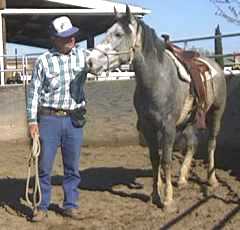No matter what approaches you use, you need to always consider four
important elements:
- Safety First
Safety may seem trite but an accident can derail your entire gentling
project. If you get hurt you're not going to be able to do much
gentling and you may lose much needed confidence in the process. If
the horse gets hurt, you may find yourself in a nearly impossible situation
of trying to get veterinary attention for a wild horse which many
veterinarians will not do.
- Use an Appropriate Facility
BLM establishes specific enclosure requirements for good reasons. Until
gentled these horses can and will crash and jump inadequate fences. Do
not try gentling your horse in a substandard enclosure. We recommend
the standard 20x20 pen as a good size for working a wild horse. If
you are going to use a round pen, make sure you have secure aisleways
between the horse's paddock and the round pen. Inspect the training
enclosure for dangerous conditions such as loose panels and sharp edges
prior to training in it.
- Use Appropriate Equipment
Only use equipment that you understand. Use only equipment that is
intended for your purpose. Make sure all equipment is in good condition
and is operating properly. Make sure that if you are putting something on
the horse, you have the ability to safely get it off of the horse no matter
what happens without you or the horse getting hurt.
- View the Big Picture
Many trainers blow it because they get too narrowly focused on their objectives
and fail to look at the total situation. You need to learn to read the horse,
observe the entire training process and environment. Notice dangerous and/or
compromising situations. Notice when the horse is losing attention, is fatigued,
is getting upset, agitated or otherwise is disconnecting from the training process.
If you don't keep an eye on the big picture you may be unpleasantly surprised when
things go wrong, the horse tries to jump the fence, kicks you, etc. Nearly all
training accidents and "disasters" are avoidable. The trainer just didn't notice the signs.
You can avoid such problems by reminding yourself to always view the big picture.
|
Always wear a helmet when
working a new or ungentled horse
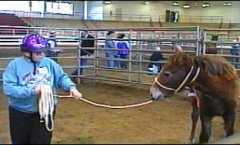
A mustang pen needn't be fancy
but should be strong and practical
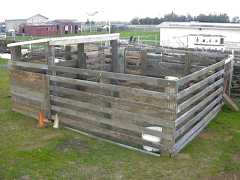
Use good equipment and make sure
you can work at a safe distance
(This is too close!)
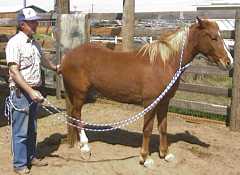
It doesn't have to be fancy.
It does have to be strong & safe.
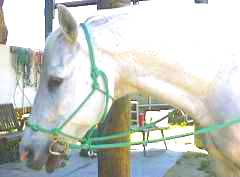
Watch for changing conditions.
The horse may have his own agenda
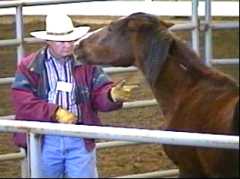
|
|
|
SPECIFIC GENTLING APPROACHES
|
Important Note: If you take on the project of developing an untrained horse, everybody will want to give you advice. Don't act on any advice, including the ideas offered in this site, unless it makes sense to you and fits your individual situation. Your abilities and the sensitivities of your horse(s) may differ from the examples given. Be alert and rational with your actions so neither you nor your horse will get hurt. This information is offered as illustrations of what we do and the reader must apply common sense since he or she is solely responsible for his or her actions.
Happy trails!
Press Back to return to the page which brought you here
KBR Horse Training Information, © 2000 Lamm's Kickin' Back
Ranch and Willis & Sharon Lamm. All rights reserved. Duplication of any of this material for
commercial use is prohibited without express written permission. This prohibition is
not intended to extend to personal non-commercial use, including sharing with others for
safety and learning purposes, provided this copyright notice is attached.
Email us to submit comments or request reproduction
permission.
|
